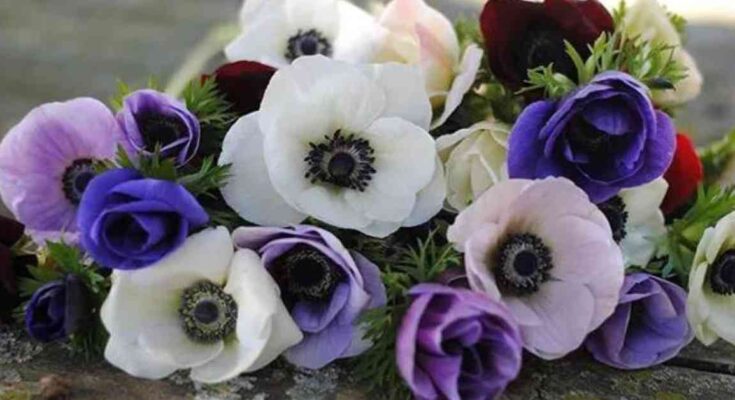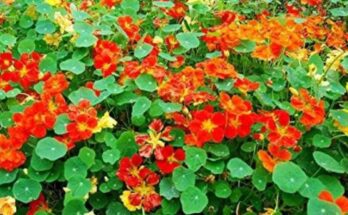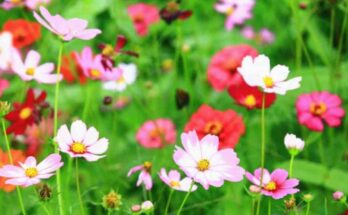Ranunculus, known scientifically as Ranunculus spp., is a genus of flowering plants in the Ranunculaceae family, commonly referred to as buttercups. These vibrant and delicate flowers are prized in gardens, floral arrangements, and botanical studies alike. In this comprehensive guide, we delve into the various aspects of ranunculus, from its botanical characteristics to its cultural significance and practical gardening tips.
Botanical Background
Ranunculus plants are herbaceous perennials or annuals, with over 600 species found across the globe. They are characterized by their showy, bowl-shaped flowers that come in a wide array of colors, including white, yellow, pink, red, and purple. The petals are often densely packed, giving them a rose-like appearance, which contributes to their popularity in floral design.
Types and Varieties
- Common Buttercup (Ranunculus acris): Native to Europe, this species is known for its bright yellow flowers and is often found in meadows and grasslands.
- Persian Buttercup (Ranunculus asiaticus): Originating from the Mediterranean region, this species is famous for its large, multi-petaled blooms in shades of red, pink, orange, and white.
- Clawed Buttercup (Ranunculus recurvatus): Found in North America, this species is distinguished by its hooked or claw-shaped petals and is often seen in woodland habitats.
- Lesser Celandine (Ranunculus ficaria): Also known as fig buttercup, this species has glossy yellow flowers and heart-shaped leaves, commonly found in damp woodlands.
Cultivation and Care
Climate and Soil Requirements: Ranunculus thrives in cool climates with well-drained soil. They prefer full sun but can tolerate partial shade, especially in warmer regions. The soil should be fertile and moist but not waterlogged, as they are susceptible to root rot.
Planting: Ranunculus is typically grown from corms, which are bulb-like structures. Plant corms in the fall or early winter, placing them 2-3 inches deep and spaced about 4-6 inches apart. Water thoroughly after planting to settle the soil.
Watering and Feeding: Water ranunculus regularly, especially during dry spells, but avoid overwatering. Apply a balanced fertilizer during the growing season to promote healthy growth and abundant blooms.
Maintenance: Remove spent flowers to encourage continuous blooming. Mulch around plants to retain moisture and suppress weeds. Lift and divide overcrowded clumps every few years to rejuvenate the plants.
Uses and Benefits
Garden Ornamental: Ranunculus is prized for its long-lasting cut flowers, making it a favorite in floral arrangements and bouquets. Its vibrant colors and intricate blooms add a touch of elegance to any garden or indoor setting.
Medicinal and Folklore Uses: Historically, various parts of the ranunculus plant have been used in traditional medicine for treating conditions such as rheumatism and fever, though caution is advised due to its toxic properties.
Symbolism and Cultural Significance: In flower symbolism, ranunculus represents charm, attractiveness, and radiant beauty, making it a popular choice for weddings and special occasions.
Pests and Diseases
Pests: Aphids and spider mites can occasionally infest ranunculus plants, especially in dry conditions. Use insecticidal soap or neem oil to control infestations.
Diseases: Ranunculus can be susceptible to fungal diseases like powdery mildew and botrytis. Ensure good air circulation around plants and avoid overhead watering to prevent these issues.
Conclusion
Ranunculus, with its captivating flowers and diverse species, stands as a testament to nature’s beauty and resilience. Whether adorning gardens, enhancing floral arrangements, or symbolizing timeless beauty, this genus continues to captivate gardeners and enthusiasts worldwide. By understanding its cultivation requirements, appreciating its cultural significance, and acknowledging its ecological role, we can truly appreciate the allure of ranunculus in all its forms.
In conclusion, ranunculus remains a beloved choice for both novice and experienced gardeners, offering a wealth of beauty and charm that transcends seasons and trends.




